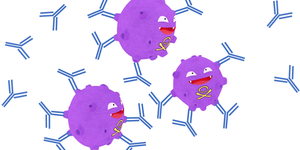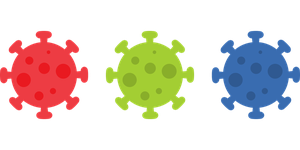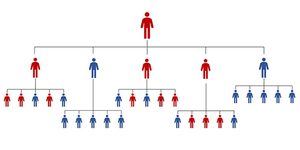Pandemics – COVID-19 Lesson Plans (6 results)
Humanity has faced pandemics since the beginning of time. The twentieth century saw multiple influenza pandemics, and now we are facing a COVID-19 pandemic caused by a coronavirus.
Coronaviruses are not new to humans or even to you. Coronaviruses are a family of viruses best identified by the crown-like spikes that cover their surface (corona is Latin for 'crown'). Coronaviruses cause upper-respiratory tract illnesses like the common cold and the 2003 SARS and 2012 MERS outbreaks. In the winter of 2019, a new coronavirus, now officially called SARS-CoV-2, emerged in Wuhan, China. The virus made the jump from animals to humans and causes a disease called COVID-19. For some people, often children and young adults, SARS-CoV-2 causes few or no symptoms. For others it can lead to severe lung damage and even death. The virus can be spread fairly easily, including by people who are infected but display no symptoms, and as a result, we are in the middle of a global pandemic, with nearly all countries in the world reporting an increasing number of infected individuals. Scientists and health professionals around the globe are working hard to rapidly learn more about this new coronavirus and the disease it causes and to prevent the spread of COVID-19.
|
Select a resource
Sort by
|
Lesson Plan
Grade: 6th-8th
4 reviews
What happens when you get food poisoning or the flu? How does our body fight an infection when we get sick? In this lesson, students will build a model of our immune system to find out how our body responds to invading bacteria or viruses that cause diseases and to investigate the role of memory cells.
Read more
NGSS Performance Expectations:
Featured
Lesson Plan
Grade: 6th-8th
7 reviews
Junkbots are easy-to-build robots that you can make using a simple circuit and some recyclable materials. In this lesson, your students will learn about engineering design as they compete to build the fastest robot. No previous robotics experience is required!
Read more
NGSS Performance Expectations:
Lesson Plan
Grade: 6th-12th
4 reviews
We hear about COVID-19 variants all the time, but what is a virus variant, how do they come about, and why do they matter? Students will explore these question and more in this lesson plan. They will use SimPandemic, a free online tool, to model what COVID-19 outbreaks look like when communities are exposed to different COVID-19 variants and understand how genetic mutations in a virus can lead to functional changes.
Read more
NGSS Performance Expectations:
New
Lesson Plan
Grade: 6th-12th
Create a two-part system for filtering greywater. Teams will focus on communication and systems engineering as they build separate components to filter solid and liquid waste and then combine them into one device.
Learning Objectives
Students will:
Consider the potential effects of drought and how greywater could be part of the solution.
Design a system for filtering out solid waste or liquid waste.
Consider effective communication strategies with their team.
Collaborate on their design…
Read more
Lesson Plan
Grade: 6th-12th
1 review
What is R naught (R₀), what factors influence it, and how does it shape the infection curves of an epidemic? Students will explore these questions and more in this lesson plan. They will then use SimPandemic, a free online tool, to model what a COVID-19 outbreak looks like in communities with different R₀ values.
Remote learning adaptation: This lesson plan can be conducted remotely. Students can work independently on the Explore section of the lesson plan using the Student…
Read more
NGSS Performance Expectations:
Lesson Plan
Grade: 6th-12th
What is herd immunity, how is it achieved, and what impact does it have on outbreaks? Students will explore these questions and more in this lesson plan. They will then use SimPandemic, a free online tool, to model different levels of viral immunity in communities to understand how a population can reach the herd immunity threshold and the impacts that has on individuals and populations during a COVID-19 outbreak.
Remote learning adaptation: This lesson plan can be conducted remotely. …
Read more
NGSS Performance Expectations:
Lesson Plan
Grade: 6th-12th
1 review
What exactly is a vaccine? Can vaccines prevent outbreaks? How effective does a vaccine need to be to help a population during an outbreak? Students will explore these questions and more in this lesson plan by first learning the biology behind vaccines. They will then use SimPandemic, a free online tool, to model different vaccine parameters to understand how vaccines affect both individuals and populations during a COVID-19 outbreak.
Remote learning adaptation: This lesson plan can be…
Read more
NGSS Performance Expectations:
Lesson Plan
Grade: 6th-8th
Students simulate the spread of a virus such as HIV through a population by "sharing" (but not drinking) the water in a plastic cup with several classmates. Although invisible, the water in a few of the cups has already be tainted with the "virus" (sodium carbonate). After all the students have shared their liquids, the contents of the cups are tested for the virus with phenolphthalein, a chemical that causes a striking color change in the presence of sodium carbonate.…
Read more
NGSS Performance Expectations:
|














